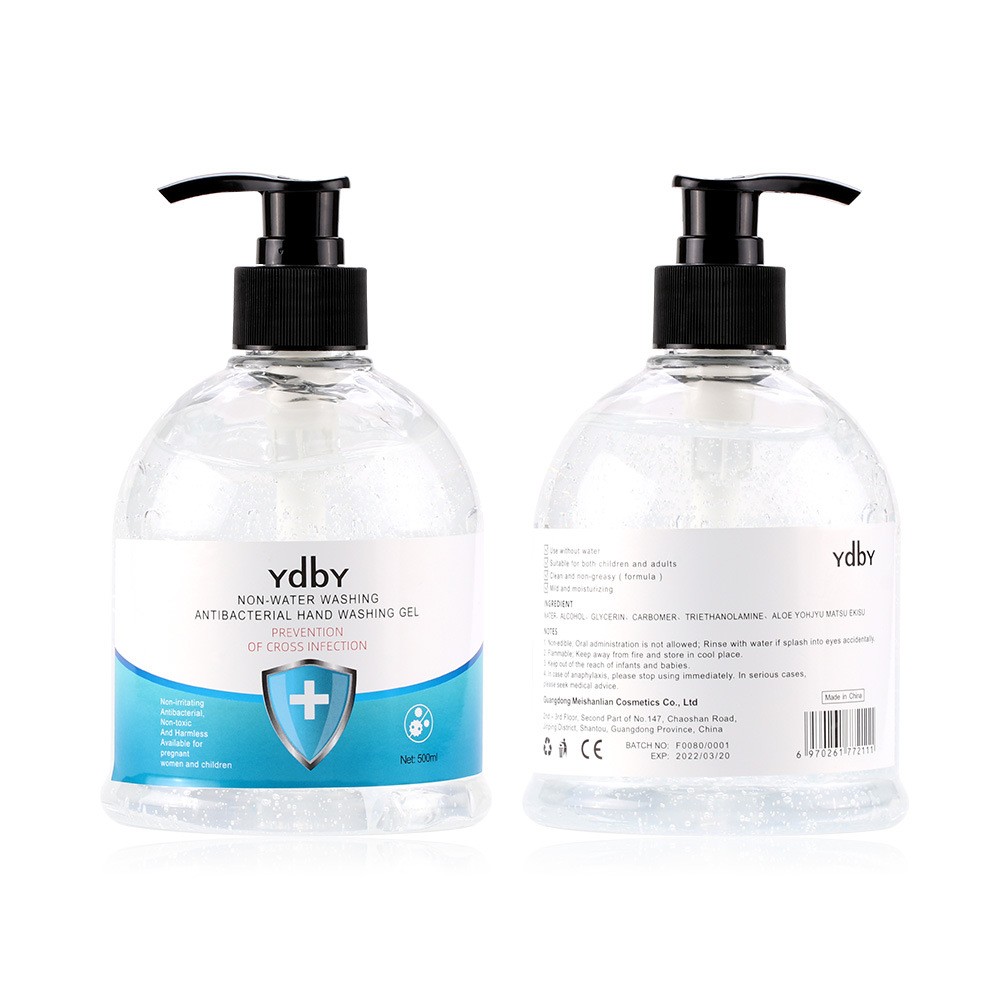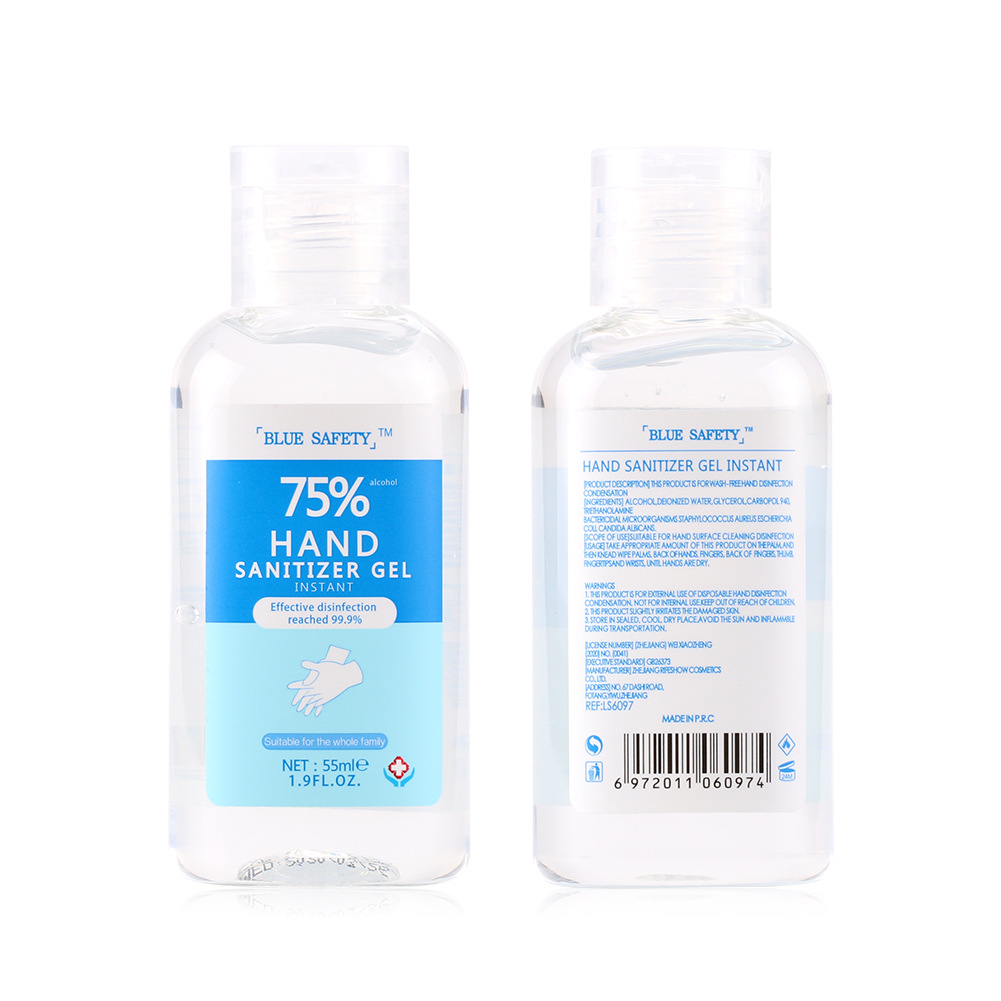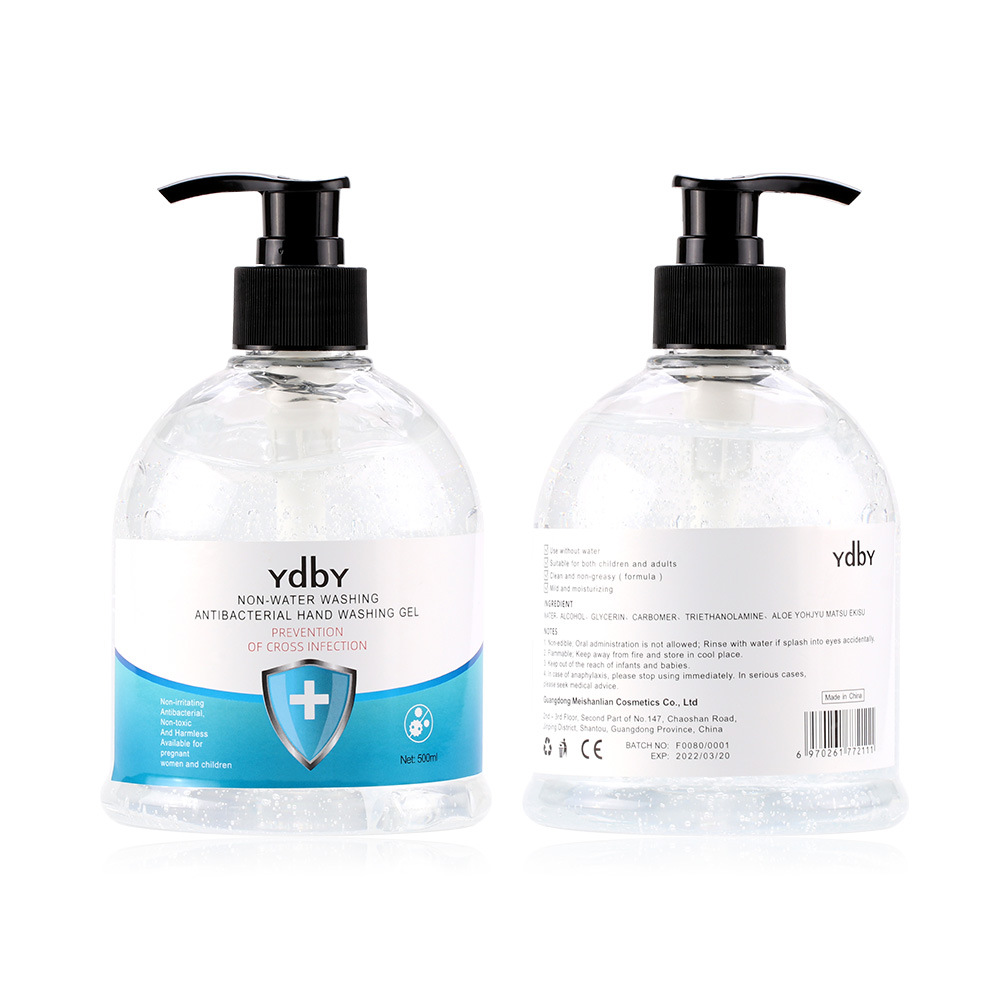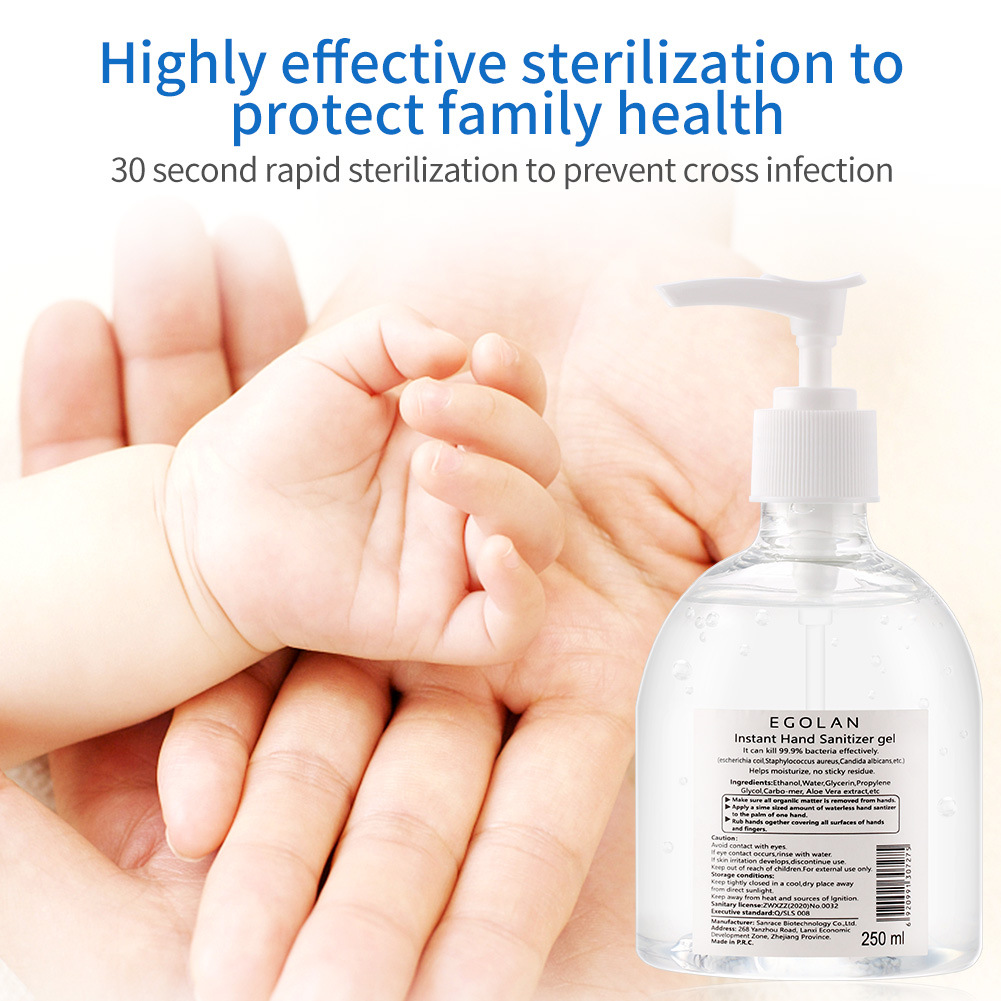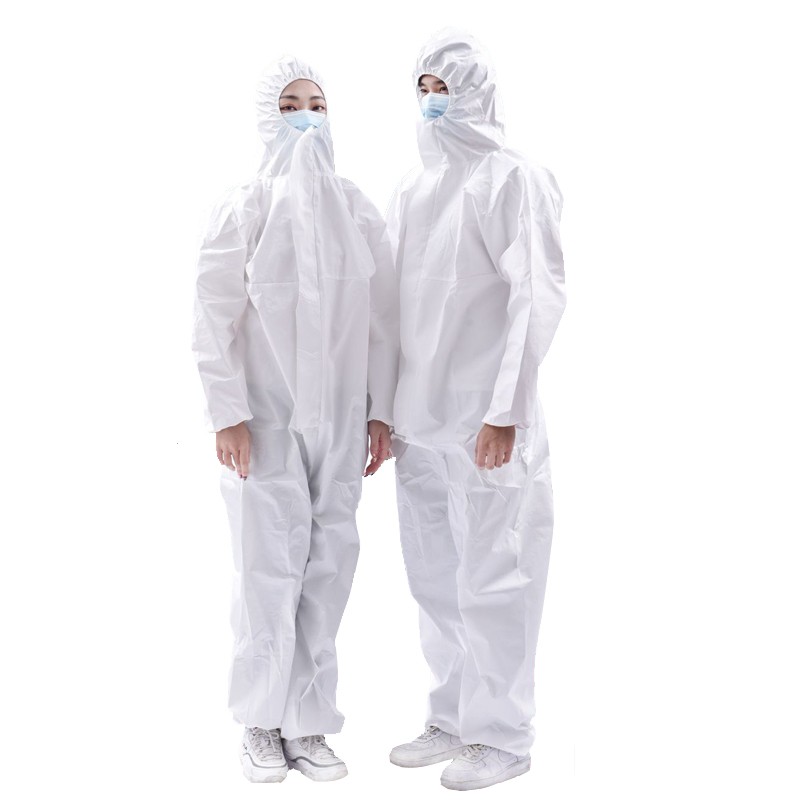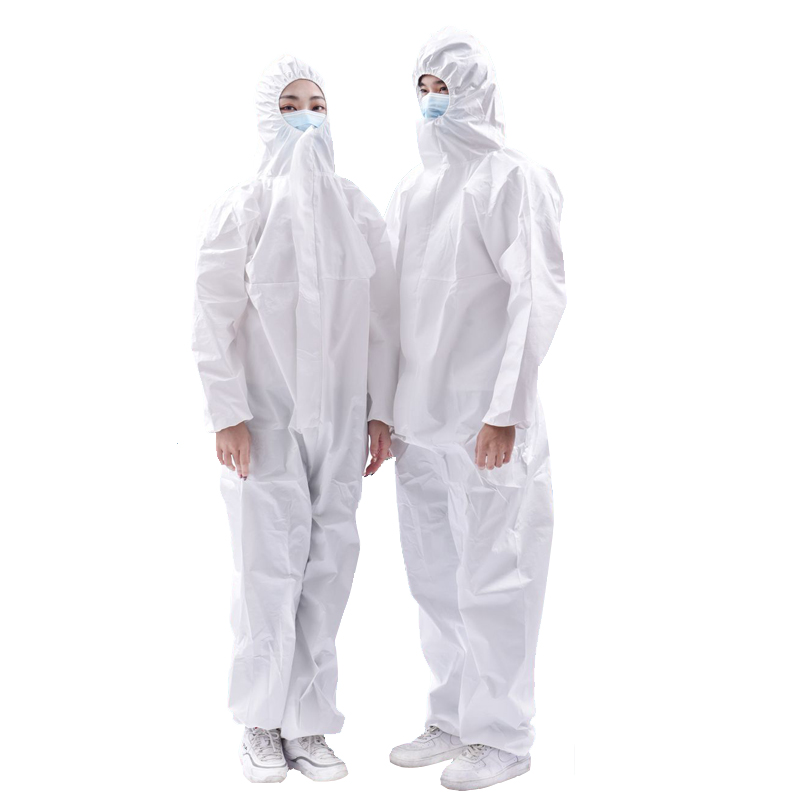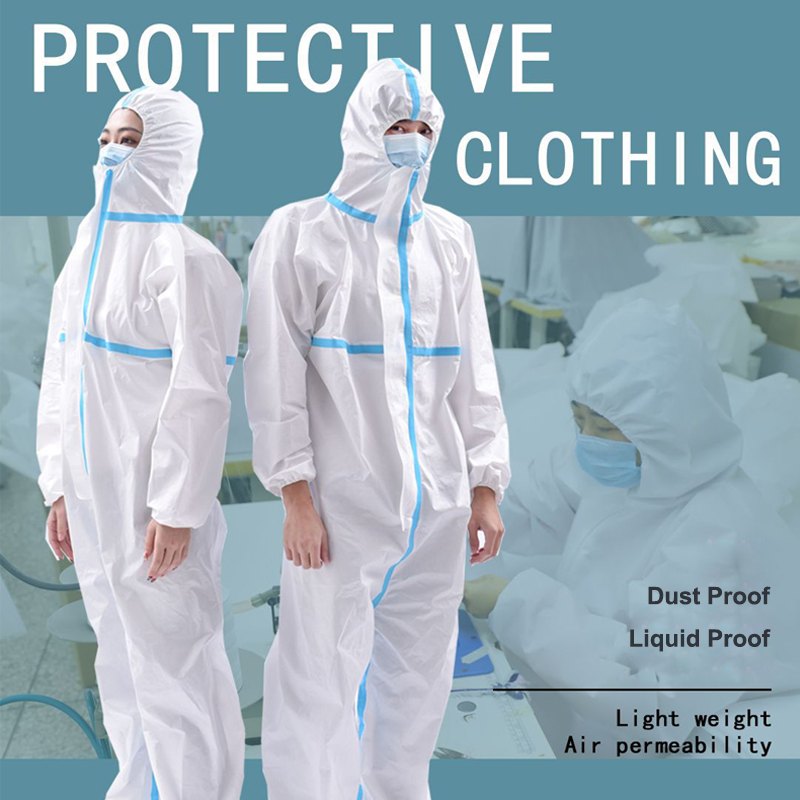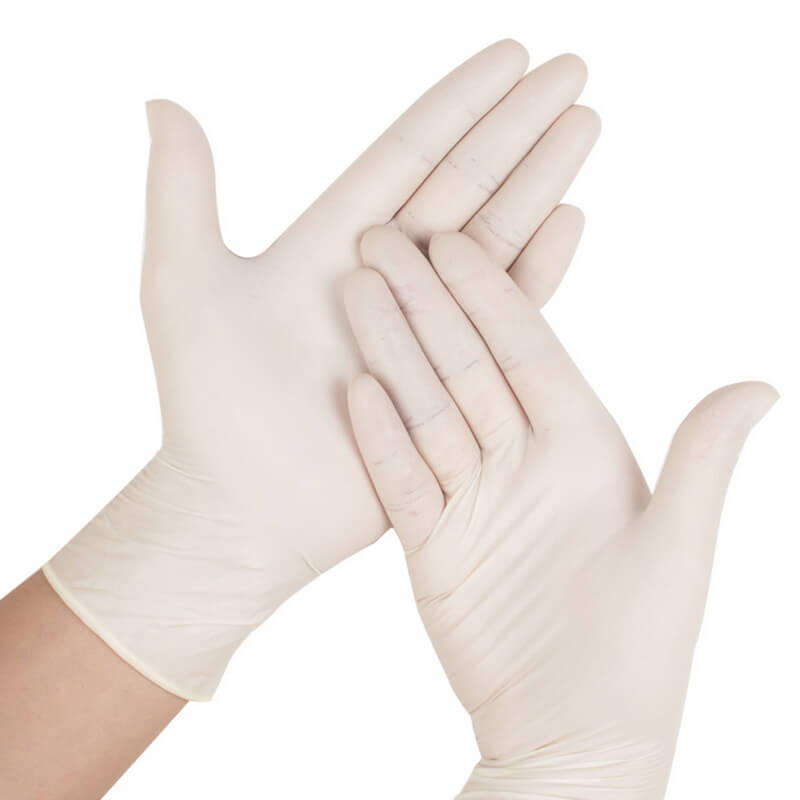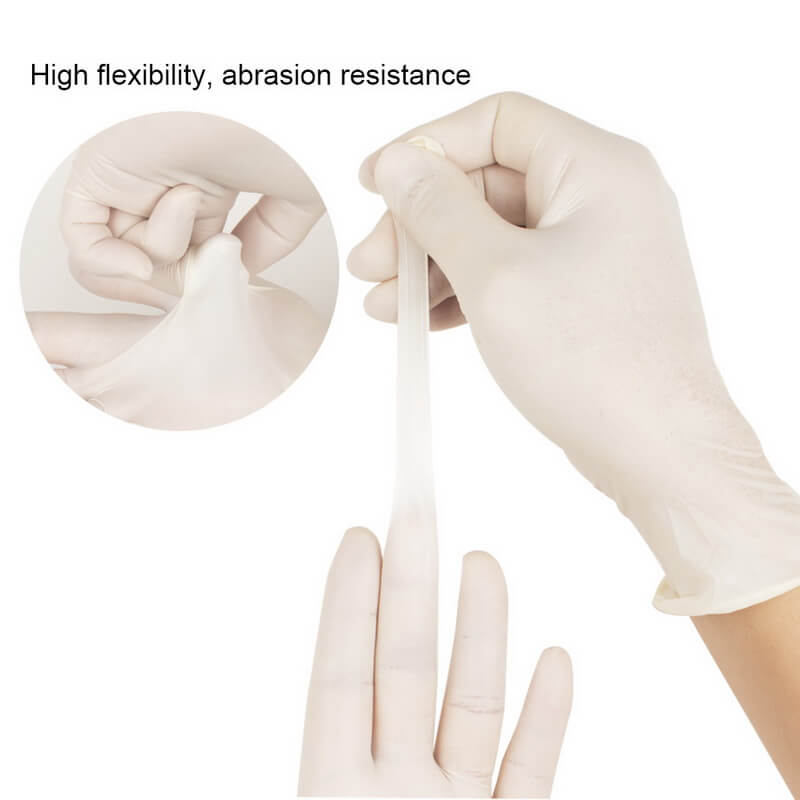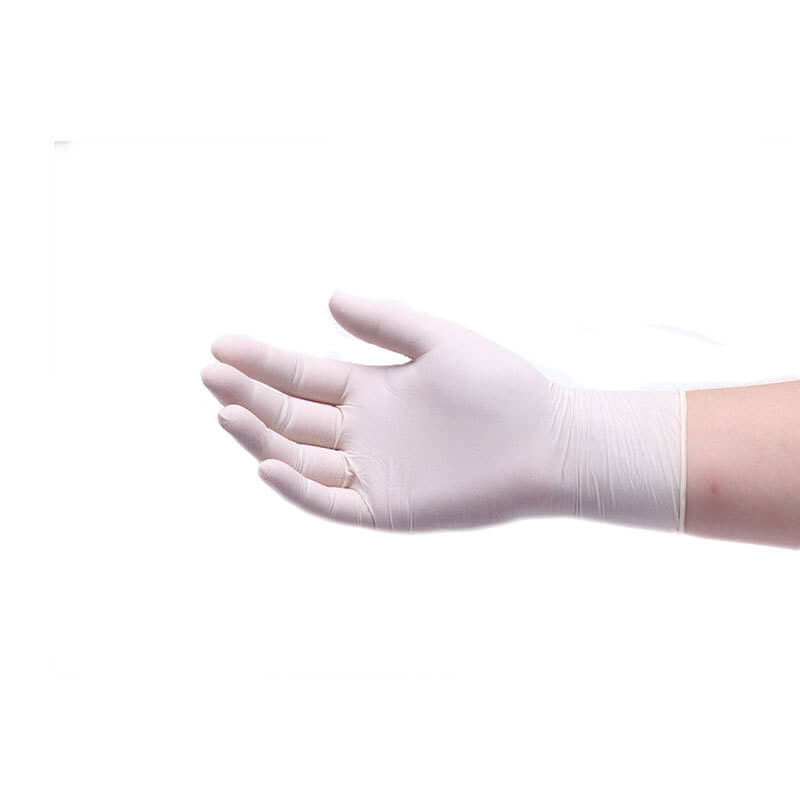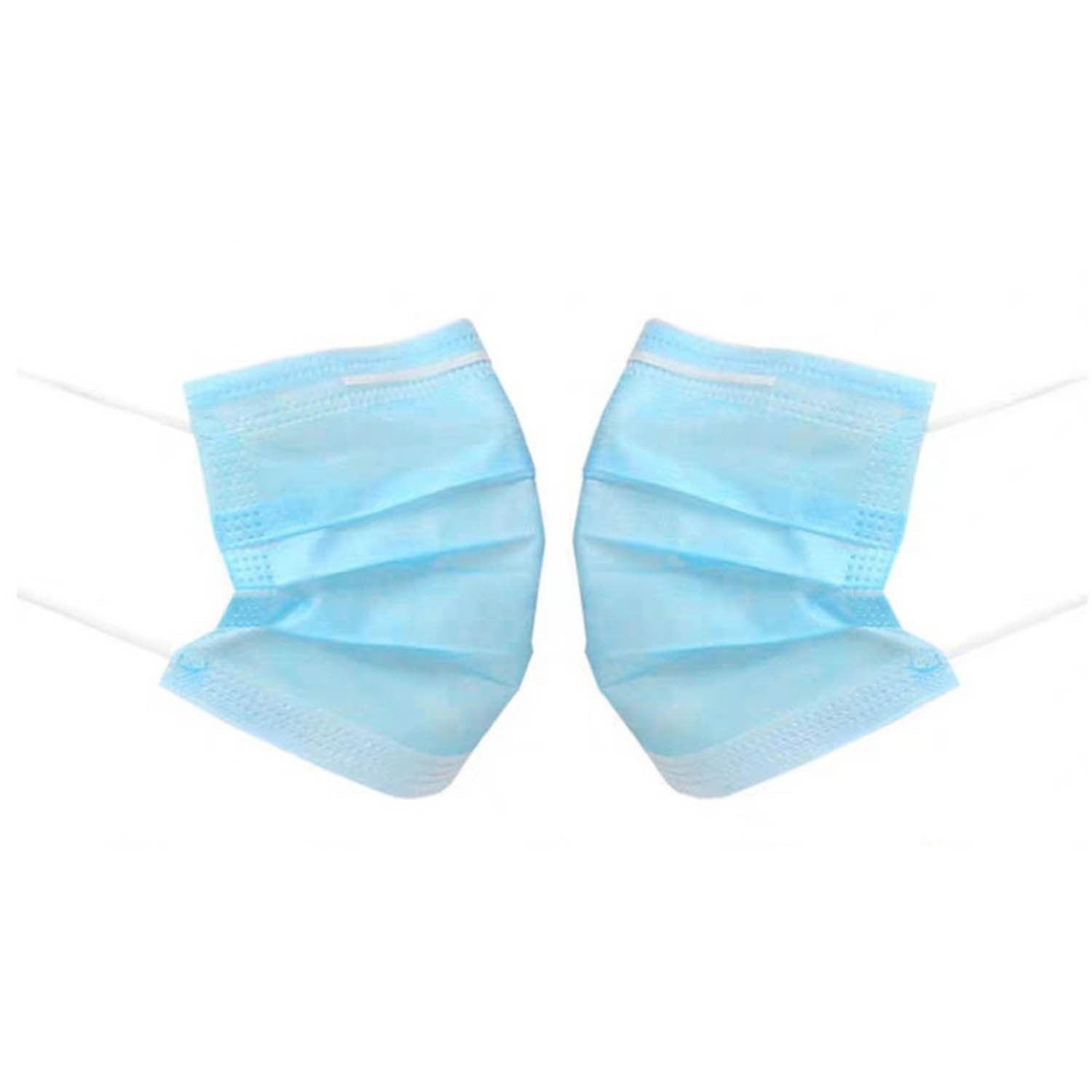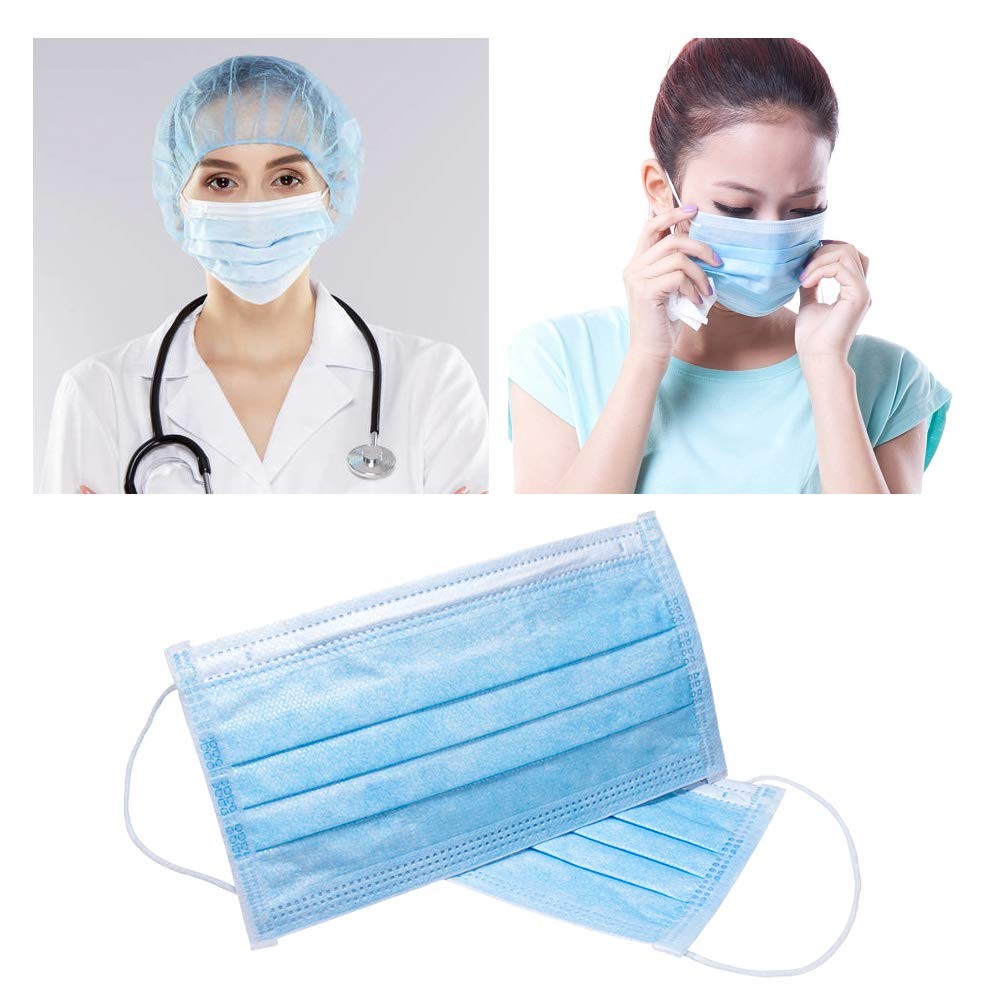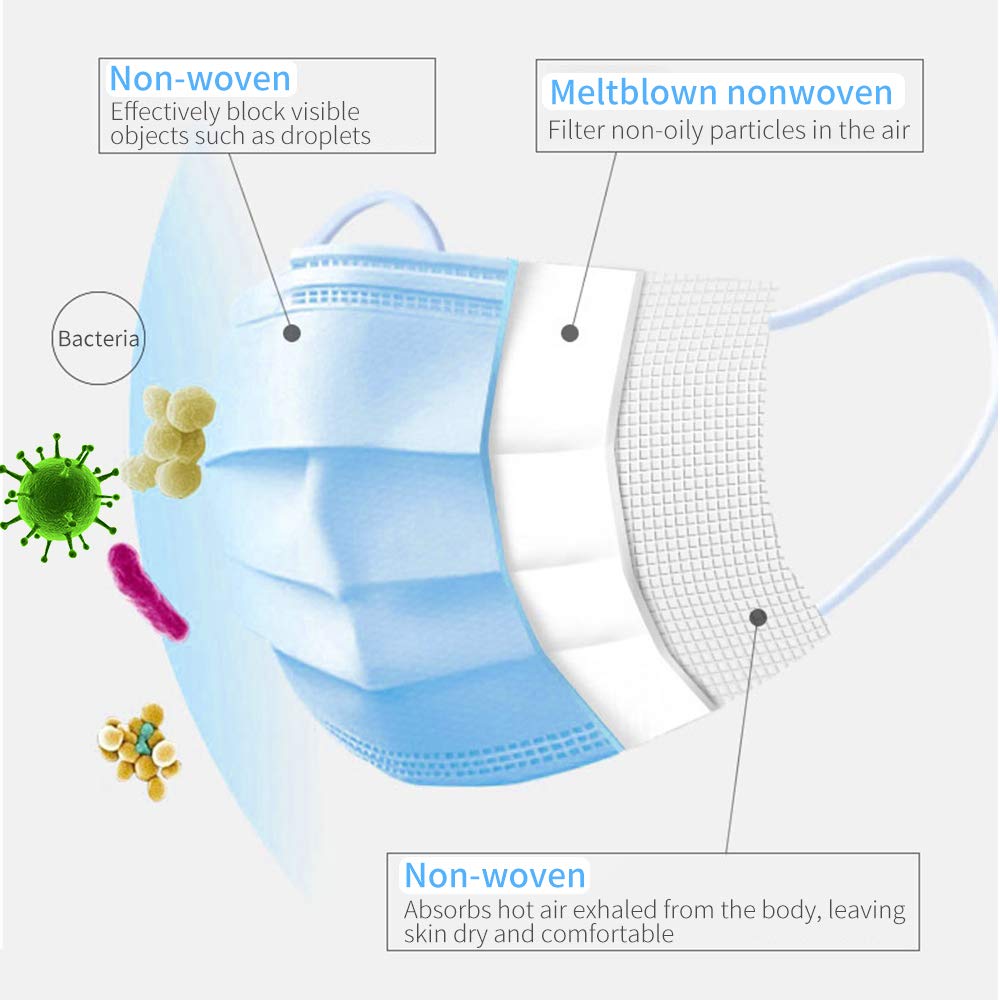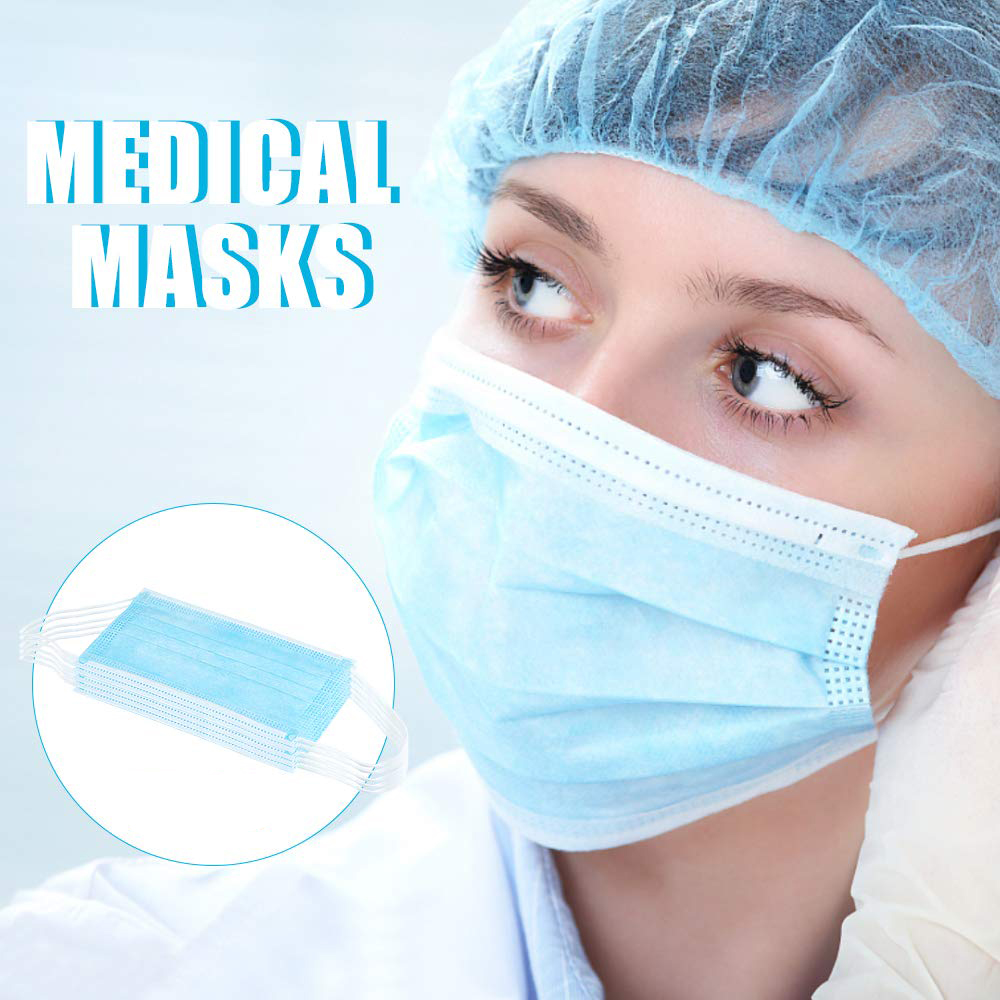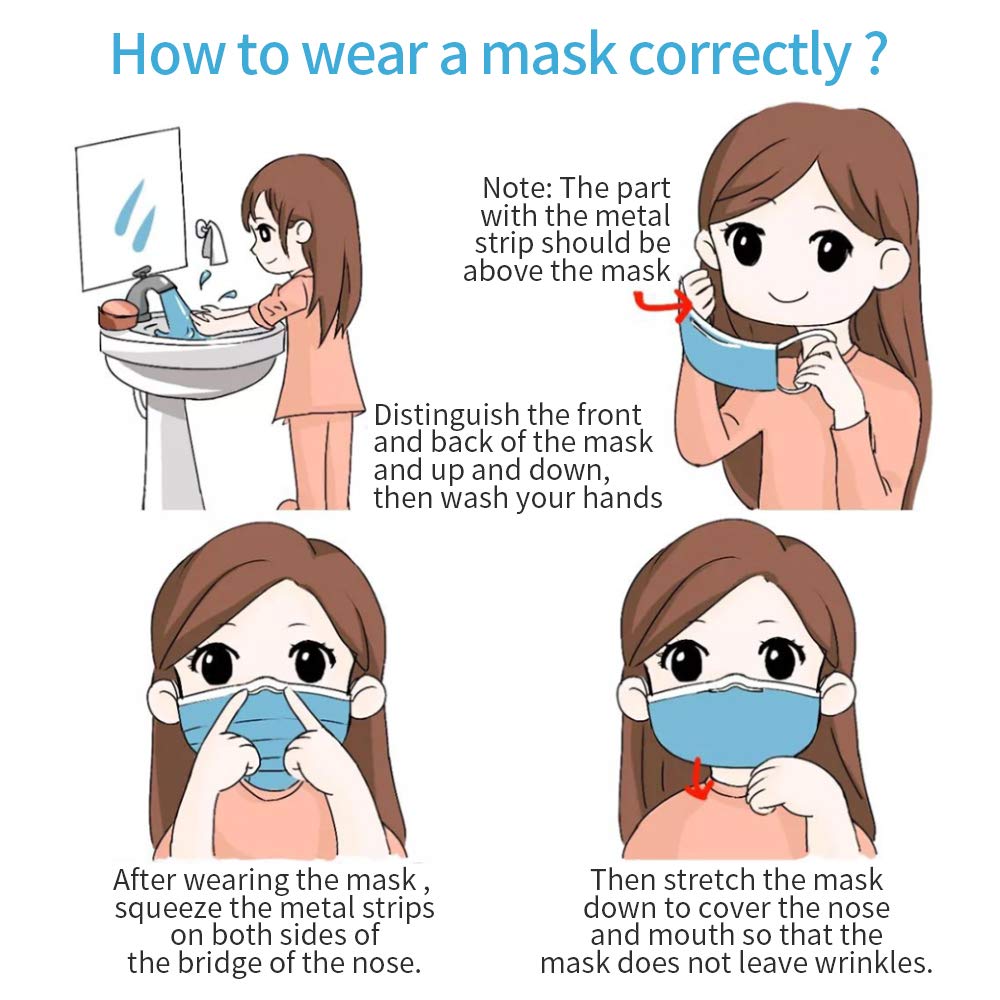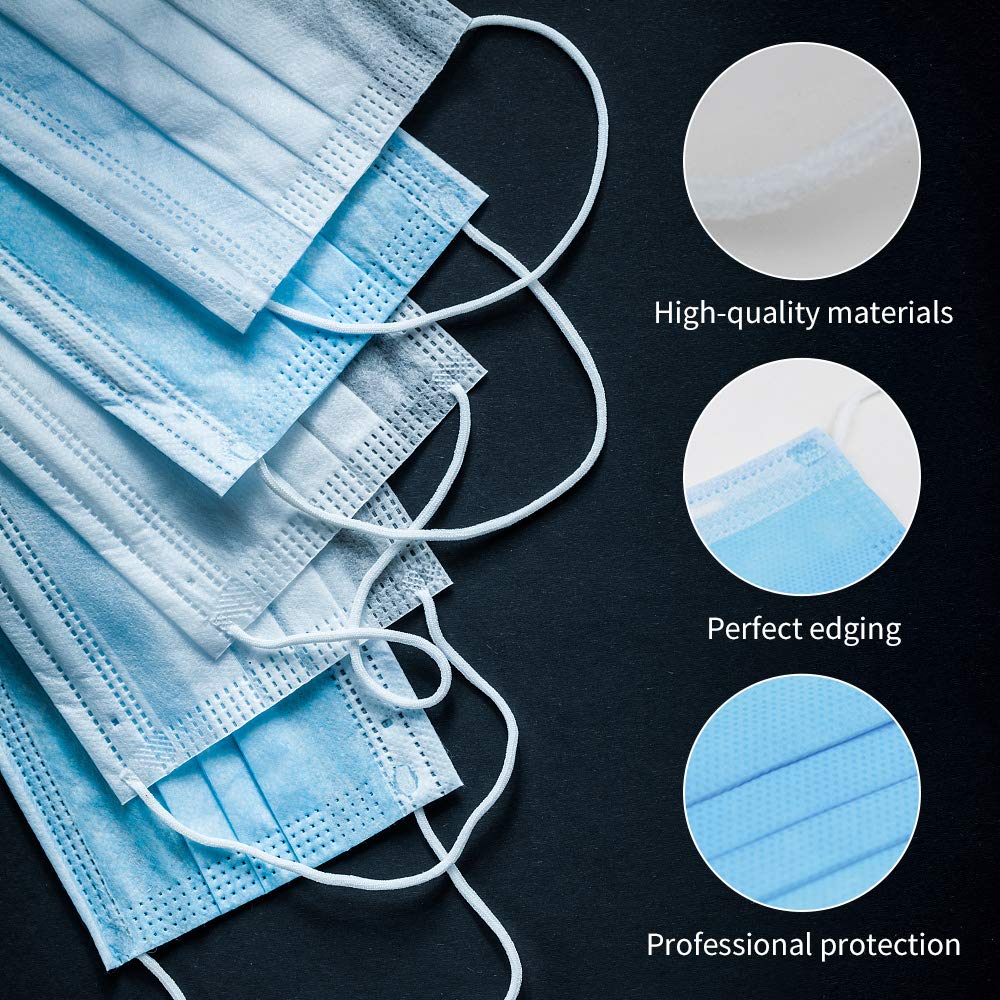There has always been a question about the potency of hand sanitizers warding off infections and diseases. Medically, you will only benefit from hand sanitizers if you use them the right way. It is even more important to use them in the right instances.
One thing is sure, hand sanitizers are potent against microbes but aren’t effective on every kind of germ. In this post, we will look at how sanitizers work and factors to consider when buying sanitizers. We will also show you the benefits of using hand sanitizers and how they shouldn’t be used.
What is Hand Sanitizer?
Before we go into the details of this post, it is expedient to quickly define what hand sanitizers are. In simple terms, a hand sanitizer is a gel or liquid that is used for protection against infectious agents. The sanitizers are designed to reduce or eliminate the population pathogens on the hands.
It is important to note that hand sanitizers are not an alternative to hand washing. However, it may suffice when soap and clean water are not available for certain cases. Hand sanitizers only bring you a few benefits of handwashing, if soap and water aren’t available. (Learn More: https://en.wikipedia.org/wiki/Hand_sanitizer)
Do Hand Sanitizers Work?
It is a smart thing to always have hand sanitizers at hand. Learning about how to use them is even more important because this will help you enjoy the benefits.
The major ingredient present in most sanitizers is either ethanol or isopropanol. Taking a look at history shows us that alcohol has always been potent against certain bacteria and viruses. As a result, people are always advised to use hand sanitizers, especially when there is a pandemic.
This means that hand sanitizers work, however, they shouldn’t be a replacement for hand washing. According to the CDC, hand washing is more effective than using hand sanitizers.
A major factor that determines whether hand sanitizers will work is the quantity you use. According to Berezow, most people don’t apply as much as they should so it doesn’t spread around their hands properly. This makes the hand sanitizers as effective as they should be.
The CDC has advised that to enjoy the benefits of hand sanitizers, the process should be like hand washing. This implies that you should use the sanitizer over your hand for a minimum of 20 seconds.
Hand sanitizers are effective against certain microbes, not every microbe. Here is a list of germs that sanitizers offer protection against:
- This is a virus that causes diarrhea and vomiting.
- Clostridium difficile. A bacterial infection resulting in inflammation and upset of the intestinal tract.
- This is infection is caused by a parasite and it results in gastrointestinal and breathing complications.
What To Look Out For Before Purchasing a Sanitizer
It is important to note that generally, hand sanitizers have expiry dates, especially when they are alcohol-based. This means while you need to store them, you also have to use them. If you don’t gradually the alcohol will evaporate as it is volatile.
This brings us to the question, “what should you look out for before purchasing a sanitizer?” You cannot walk into the local store and pick up just any sanitizer to protect yourself against diseases. In recent times, there has been a lot of sensitization about sanitizers and the demand has skyrocketed.
Even though there is a dearth of sanitizers in the market you shouldn’t just go for any sanitizer. There are certain factors to consider before purchasing one.
- The chief factor is whether the hand sanitizer is alcohol or water-based. Water or non-alcohol based sanitizers are pretty much useless when it comes to protecting you against disease or infections.
The CDC advises that any hand sanitizer to be used should contain a minimum of 60% alcohol. With this level of alcohol, you only reduce or slow down the growth rate of the pathogens. Note that hand sanitizers don’t eradicate pathogens.
- It is important to check the level of alcohol to be sure that it is not too little. Also, check that the sanitizer is not made using alcohol substitutesas they are not effective.
- You should also check for the expiry dates. Like we stated earlier, sanitizers have expiry dates. After this period, the sanitizer loses its ability to protect you from infections or combat pathogens.
- It is also important to check that the sanitizer comes with anti-viral or anti-bacterial properties before purchase.
Remember that excessive use of sanitizers will make your hands dry because of alcohol. This can result in cracking or bleeding (in extreme cases). It can even make skin conditions like eczema worse.
Should You Make Your Sanitizer?
As the coronavirus pandemic spreads to different nations of the world, there has been an increased demand for sanitizers. Because of this, sanitizers have become scarce and many people are beginning to make their sanitizers at home. Should you make your hand sanitizers at home?
The CDC doesn’t advise you to do so. Why is this so?
- The first reason is that the CDC recommendshand washing over the use of hand sanitizers. Sanitizers should only be used when there isn’t sufficient water and soap for handwashing.
- Reports by the FDA revealthat while many people make DIY sanitizers, they may lack the required information to do so. There are specific ingredients and recipes used in making sanitizers for them to offer adequate protection.
- Making a DIY hand sanitizers is far more difficult than you can imagine. According to experts, there is a possibility of ending up with the wrong product. It may either be too harsh or completely ineffective which is tantamount to a waste of time and ingredients.
If you have to make DIY sanitizers at home, then you should follow the guidelines provided by the WHO and FDA. However, these recommendations are designed to be used by medical professionals and not the layman. The instructions include:
- Using isopropyl alcohol, denatured alcohol, hydrogen peroxide, sterile water, and glycerol/glycerin.
- You must measure the alcohol concentration in the end product. This is to be done with the aid of an alcoholometer. This is the only way to be certain that the sanitizer will protect you against pathogens.
- Avoid the use of dyes, fragrances, or essential oils as they may result in the triggering of allergies.
- The FDAalso recommends that you can only use pharmacy-grade ingredients in making sanitizers.
If you are not able to follow these guidelines then it is wise to avoid making DIY sanitizer at home. All in all, it is best to stick to hand washing as much as you can. This is the assured way of protecting yourself from pathogens.
Handwashing vs Sanitizing
It is almost certain that we use our hands more than any other part of our bodies to touch surfaces. This is why they are the chief point of contact when it comes to contracting diseases and viral infections. We advised to follow the regulations regarding hand hygiene, especially during pandemics.
The question is this, which is better, hand washing or hand sanitizers? According to the CDC, hand washing is more preferable and sanitizers should only be used when water and soap aren’t available.
We will present two tables below showing when to use each of these processes and how to use them. These tables are based on instructions by the CDC.
| When to use | |
Water and soap (Handwashing) · When preparing food, before, during, and after. · Before eating. · Before and after attending to a sick person. · Before and after attending to an injury. · After changing diapers, using the bathroom, and cleaning up a toddler that used the bathroom. · After coughing, sneezing, or blowing your nose. · After touching animal food, cages, waste, treatments, or the animal itself. · After touching waste material. · When your hands are visibly greasy or dirty. | Sanitizing · Before and after you visit a loved one at a nursing home or the hospital. However, if the person is struck with Clostridium difficile, wash the hands with soap and water. · When water and soap aren’t readily available. In such cases, use only alcohol-based sanitizers with a minimum of 60% alcohol. As soon as you get water and soap, wash your hands. · It is important to note that you shouldn’t use sanitizers when your hands are greasy or dirty. |
| How to use | |
Water and soap (Handwashing) · Put your hands under running water to wet it and then apply soap. · Rub the hands against each other to lather them. · Scrub all the surfaces including backs, palms, between fingers, beneath the nails, etc. Do this for at least 20 seconds. · Rinse off the soap under running water. · Dry the hands with a clean towel. You may also air dry them. | Sanitizing · Apply sufficient sanitizer to cover all the surfaces of the hand. · Rub both hands against each other until they feel dry. Do this for at least 20 seconds. · You shouldn’t wipe off or rinse the sanitizer, let it dry off on its own. |
Benefits of a Hand Sanitizer
Hand washing is still regarded as the best way to keep the hands safe from viruses and bacteria. However, with hand sanitizers comes a level of protection which is why you should have them handy. Let’s take a look at the benefits of using hand sanitizers.
Cleanliness
You shouldn’t be surprised at this as this is one of the key reasons why we make use of sanitizers. As the name implies, it is meant to sanitize the hands. They do this by killing germs and reducing the population of pathogens on the hands.
Studies show that hand sanitizers can eliminate up to 99.9% of all the germs present on the hands. Because of this, the CDC recommends that you can use hand sanitizers as an occasional replacement for hand washing.
Portability
Even though handwashing is highly recommended, it is impossible to take a sink everywhere you go. It is also impossible to carry running water around in your backpack. How then do you carry out hand hygiene as frequently as you should?
This is where hand sanitizers come in handy, they can enter into your bag, purse, and even pockets. With this, you are covered even in situations where you don’t have access to clean running water and soap.
As you know, you don’t need a sink to use a hand sanitizer. So it is perfect for those situations where you have come in contact with several people or are about grabbing a snack.
Perfect choice for group gatherings
When you have a lot of human traffic, there is a very high risk of cross-contamination. Cross-contamination can be between two individuals or individuals and surfaces. All you need to do is take a few moments to sanitize at frequent intervals.
The sanitizer can be placed close to entrances and at vantage points in the establishment. When people pass by them they are instantly reminded of the need to sanitize their hands. it is perfect for office establishments, schools, gyms, etc.
A little squirt when entering and after leaving is perfect if the individual won’t be staying for long periods. Otherwise, sanitizing at intervals becomes necessary.
Reduces the risk of diseases
This is a very important benefit, especially during the flu season and during a pandemic. During such periods, you must keep yourself away from people’s germs as much as possible. However, staying away may not be completely possible which is where hand sanitizers play a major role.
Periodic use of the sanitizer, especially after coming in contact with other humans is important. You should also sanitize the hands after touching frequently touched surfaces. In your homes or offices, sanitizing surfaces also helps to keep you safe from disease.
Softer hands
This may seem a bit mundane and surprising but using sanitizers frequently will show you a proof. However, this is only possible with water or non-alcohol based sanitizers. The CDC does not advise you to use these in protecting yourself against disease.
How Do You Use a Hand Sanitizer
Because you may not always have access to water and soap, hand sanitizers are very important. It is, therefore, important that you know how to use them properly. If you don’t, then there is no point in using them as you still wouldn’t be protected.
Four factors affect how effective hand sanitizers will be when you use them. They include:
- The product you use
- The quantity of sanitizer you use
- Whether you use the proper technique or not
- How consistent you are with the use of the sanitizer
Not every situation is appropriate for the use of sanitizers. For example, when your hands are stained with dirt or grease, you should wash the hands not use a sanitizer. However, after shaking hands, getting off public transportation, or touching certain surfaces, sanitizers are appropriate.
The question to answer at this point is, what is the proper way to use sanitizers?
- Apply the right quantity of sanitizer onto one of your palms. Usually, the manufacturer adds instructions regarding quantity to the packaging of the sanitizer.
- Rub both hands against each other. When doing this, ensure that you cover every surface on the hand and don’t forget the crevices between the fingers.
- Only stop rubbing your hands against each other when you notice that they are dry. This should be about 20 seconds after you began rubbing. Make sure that you don’t wipe off or dry your hands with a towel before the sanitizer dries up.
Alcohol-based sanitizers are not safe to be taken orally. This is why you must be careful when you have children around. Keep your sanitizer in a cool and dry place, away from the reach of children.
How Hand Sanitizers Should Not Be Used
The CDC has reiterated that hand washing is the best way to keep the hands protected from pathogens. Of course, you don’t have access to running water and soap all the time, which is why we recommend sanitizers. Now that you know how to use sanitizers, it is important to also know how they shouldn’t be used.
Eliminating germs
The basic fact about sanitizers is that they are efficient in reducing the microbe count on our hands. This is only in certain situations as they are not potent against all microbes. How is this possible?
Firstly, hand sanitizers do not kill microbes, they only help to remove them from the skin surface. This is why washing the hands with soap and water is better since you will have sufficient water to go round. To eliminate germs from your hands, you need to make use or sufficient sanitizer, a step many people neglect.
Cleaning greasy or dirty hands
When it comes to washing greasy or dirty hands, soap and water will always gain preference. Hand sanitizers simply do not cut in this regard. This is why they are recommended for use in medical settings more than regular life.
In clinics, workers and visitors are exposed to so many pathogenic microbes. However, it is very difficult to find hands covered in grease or dirt in such an environment. Sanitizers will be perfect for this sort of scenario.
After working in the garden, playing a sport, fixing your car, etc. your hands are bound to be very dirty or greasy. Sanitizers may not be able to handle such an amount of impurity, even if you use up a whole bottle.
Removing pesticides, heavy metals, and harmful chemicals from the hands
According to several studies, it is clear that hand sanitizers cannot inactivate many harmful chemicals. As such, it is suggested that when you come in contact with any of these substances, you should wash with water and soap.
Swallowing alcohol-based sanitizers
Alcohol-based sanitizers should be used externally only, avoid oral ingestion. This is the only way their use is safe. When you take in more than a few mouthfuls of sanitizer, you put yourself at risk of alcohol poisoning. For this reason, keep your sanitizers away from children.
Other Frequently Asked Questions About Sanitizers
Q. Are hand sanitizers effective against Coronavirus?
The CDC recommends washing hands when you have access to water and soap. This is still the best way to keep your hands free of pathogenic microbes. The washing should be done for up to 20 seconds. It is only when there is no water and soap that you should make use of sanitizers containing at least 60% alcohol.
Q. Can I make DIY sanitizers?
You can always purchase sanitizers at pharmacies and local retail stores. Over the last few weeks, many of these pharmacies and stores have run out of sanitizers. This means you can make your alcohol-based sanitizers following the temporary regulations by the FDA.
However, it is still more preferable to buy sanitizers instead of making them for several reasons. We have discussed most of these above.
Q. What should I do when I react to a hand sanitizer?
Once you notice that using a sanitizer has triggered a certain reaction, reach out to your physician. In such cases, the FDA has called for medical professionals to make reports of adverse experiences. The reports should be made to the MedWatch Adverse Event Reporting program.
Q. Can I use household products that claim to protect against COVID-19 on my hands?
Before using any such products, check the directions for use properly. Disinfectant wipes or sprays may cause eye or skin irritation. This is because they weren’t designed to be used on human skin. Check this list to see products that have met the criteria for use against SARS-COV-2.
Q. Can I add alcohol to a non-alcohol based sanitizer to protect me against coronavirus?
- Doing this is not likely to produce an effective sanitizer against coronavirus. Click here to see the guideline for making your sanitizer at home. Based on this guide, you cannot convert your non-alcohol based sanitizer through this method.
Q. Do hand sanitizers come with an expiry date? Can they still protect against the disease after this date?
Since hand sanitizers are over-the-counter, they have expiry dates. There is still no information about their effectiveness or stability after the expiry dates.
Conclusion
Cleaning your hands frequently is very important to maintaining your health and that of your loved ones. Vigorous washing using soap and water is recommended by the CDC as the chief way of cleaning the hands. However, hand sanitizers are also efficient when used properly.
We have shown you the type of hand sanitizers to use and how to make yours at home. As much you can only make DIY hand sanitizers when you cannot get at a store or pharmacy. When you do, be sure it is alcohol-based. ( For information, more details, visit https://www.trendebut.com .)
You must be reading this post because you have tons of questions about hazmat suits. If you are, then you are not alone, many people are in the same shoes. You must know what these suits are and how to use them because they are not an everyday item.
We put this post together to help you out with all your hazmat suit questions. After reading this post, you should know if you need one or not and how to find the best one for you.
What is a Hazmat Suit?
We begin defining by telling you that “hazmat” is actually “hazardous material suit.” According to the US Department of Homeland Security, a hazmat suit is overall worn by people for protection from hazardous substances or materials. Such materials include radioactive materials, biological agents, and dangerous chemicals.
Safopedia defines a hazmat suit as a piece of PPE made of impermeable material. This suit is designed to protect the wearer from hazardous materials and substances. It also protects from radioactive and biological agents in an environment where one is exposed to such. Note that they are not to be used in warfare. (Learn More: https://en.wikipedia.org/wiki/Hazmat_suit)
Users of Hazmat Suits
Hazmat suits protect the wearer from four major types of elements or agents. When we consider these, it becomes easier to state who the users of hazmat suits are. We have put together a list below to help you understand clearly who needs a hazmat suit.
- Laboratory scientists and other individuals that work with chemicals. Hazmat suits are made from rubber or heavy PVC, Teflon, and Tyvek. These materials act as a physical barrier to protect the wearer from splashes and spills of chemicals.
- Firemen and other individuals working around high temperatures. The materials used in making the suits are reflective and insulating. As a result, they reduce the effects of high temperatures and fires.
- Medical personnel and other workers dealing with biological agents. When treating a patient who is infected with certain viral infections, it is necessary to wear hazmat suits. A vivid example is the treatment of a patient with the Ebola virus.
The suits are mostly powered with air-purifying respirators accompanied with hoods that protect the wearer from different body fluids.
- Workers in nuclear plants and radioactive stations. It is dangerous to inhale radioactive gases or particles. With these suits, the wearers are protected from direct contact with radioactive or nuclear radiation.
Situations to Use Hazmat Suits
The situations to use of Hazmat suits depend on the level of protection that is required by the wearer. There are different levels of suits with Level A providing the highest form of protection and D the least protection.
- Level A suits are used in situations where the wearer cannot afford to be contaminated. It is mostly worn when there is a risk of contamination from an unknown source. These suits are usually vapor-tight so they protect against both airborne and liquid substances.
- Level B suits are very similar to those in level A only that this time, the breathing apparatus is not necessarily encapsulated. They are worn when there is a risk from a known source but the wearer requires a high level of protection. They are preferred when the suit will be worn for extended periods because of respiratory freedom.
- Level C suits are regarded as the most common of the lot. They are needed in a situation where the wearer does not need as much respiratory protection as Level B suits. These suits are not vapor-tight and are mostly worn by nuclear, biological, and chemical agents.
Disposable or Reusable Hazmat Suits?
Choosing between a disposable and a reusable hazmat suit is totally dependent on what you do and personal preferences. Each one has its advantages and disadvantages. We will share these with you so that you can make your decision.
Disposable hazmat suits
One of the major advantages of disposable gowns suits is their weight. They are by far lighter than their reusable counterparts which means they are likely to be more comfortable.
In addition to this, many versions come with integrated boots, socks, and gloves. The implication of this is that they are easier to don and doff. Let’s consider a few more specific pros of disposable hazmat suits.
Cost of purchase and maintenance
Without a soothsayer, you should know that disposable suits are cheaper than the reusable ones. This means you should invest in a disposable suit if you don’t need one too often. By the way, since you are disposing of it immediately after use, it doesn’t come with extra maintenance costs thus saving you money.
Safety
Generally, disposable suits are perceived as safer and we will tell you why. Let’s say while working, a harmful chemical touches the suit. You dispose of the suit immediately since you don’t have to wash it afterward.
There is also less risk of getting the environment contaminated. This is because the moment a suit is contaminated, you doff and dispose of it and don a new one. So far, disposable suits have proven to be more resistant to chemicals because of the use of several laminates.
Reusable hazmat suits
Just like disposable suits, the reusable ones also have specific strong points. If you are disposed to these advantages, then you may choose a reusable hazmat suit instead. Some of these advantages include:
Durability
Many companies are looking at how they can become sustainable which means they are seeking to phase out disposable items. When you have to dispose of a suit after each use, it is clear that it is not sustainable. By the way, the more of these suits we dispose and process, the more damage we are doing to the environment.
Reusable suits do not cause any harm to the environment. You can wear them over and over as long as you follow the maintenance instructions and the suit is not damaged. So while they are costlier, reusable suits save you cost in the long run.
Another thing to consider is the fact that reusable suits are mechanically stronger than their disposable counterparts. This means that with the right contamination procedure, you can efficiently and frequently use a reusable suit.
The breaking point
Most times, the decision boils down to how much you are willing to spend on the suit. The difference between both may run into hundreds of dollars or euros.
Disposable suits are cheaper but then, you have to buy so many. Reusable suits, on the other hand, cost a lot more but you don’t need so many. This means if you will use the suit frequently, a reusable suit is a better option, while disposables are better for an occasional user.
Types of Hazmat Suits
There are two different classifications of hazmat suits, the European classification, and the USA classification. We will discuss both in this section.
The European Classification
The suits here are split into six groups, each one is discussed below:
- Type 1 – Provides the wearer protection from gaseous and liquid chemicals. They are gas-tight and are equivalent to the level A of the US classification.
- Type 2 – Protect the wearer from gaseous and liquid chemicals. They are not gas-tight and are equivalent to the level B of the US classification.
- Type 3 – Protect the wearer from liquid chemicals for short periods. They are liquid-tight.
- Type 4 - Protect the wearer from liquid chemicals for short periods. They are spray-tight and are equivalent to the level C of the US classification.
- Type 5 - Protect the wearer from liquid chemicals for short periods. They will only cover some parts of the body and are equivalent to the level D of the US classification.
- Type 6 – Protect only a part of the body from liquid chemicals.
The United States Classification
Under this classification, the suits are split into four levels, each is discussed below:
- Level A – The suits in this level provides complete encapsulation and are vapor-tight protecting the wearer from contact with airborne and direct chemicals. The suits come with Self-contained Breathing Apparatus also known as SCBA. They are used when there is a threat to human health and life from chemical spills.
Hazmat gear in level A protects against splashes, mists, gases, and vapors which is why they have to be gas-tight. They are also splash resistant and vapor-tight thus protecting the wearer from dangerous substances and chemicals.
- Level B – They are not as protective as those in level A because they are not vapor-tight. These suits are also worn with SCBA that can be positioned internally or externally depending on the suit. You wear these suits when there is a risk of chemical splashes.
It is important to note that they do not protect you from gases or vapors. They usually come with gloves, clothing, and boots that are resistant to chemicals.
- Level C – As you will expect, they offer less protection than the preceding level B. These suits are worn along with gas masks or respirators alone. Many of the firefighting clothing you know fall into this category.
The suits in this level basically protect from airborne substances and hazardous chemicals. However, they are not to be used in chemical emergencies or in zones where oxygen is deficient. This equipment will also require the wearer to put on a hard hat along with disposable outer boots that are resistant to chemicals.
- Level D – They are usually not seen as hazmat suits but as work clothing. This is because they do not come with any protection for the respiratory tracts. Instead, they protect the eyes alone from splashes.
By this description, we know that level D suits present the least level of protection. As a result, they are only used when there are no possible risks of exposure to chemicals.
How Effective are Hazmat Suits?
In the workplace and, indeed, everywhere else, we are faced with different kinds of risks daily. Regardless of the risks that come our way, there is always a weapon to defend ourselves. It is always a matter of knowing what the weapon of defense is and how it can be used.
When it comes to chemical risks, whether airborne or liquids, the best defense is hazmat suits. We have already defined them above but the question is how effective are they?
A hazmat suit is a physical barrier that acts as a shield between the wearer and the chemicals. They usually come with an independent oxygen source so the wearer needs not to worry about breathing inconveniences. The idea behind hazmat suits is to separate the wearer from the contamination in the environment.
These suits range from simple to complex and advanced. The simpler ones are worn when the wearer only has to worry about splashes or spills of liquid chemicals.
However, there are times when the wearer needs a higher level of protection from airborne contaminants and the fumes of toxic chemicals. In such cases, the advanced suits are donned. This is because asides from the protective nature of the clothing, they are also vapor-tight and air-tight.
Since hazmat suits are so versatile, they can be used by people in different professions. Examples are healthcare workers, military personnel, firemen, workers in radioactive stations, etc.
Insurance during chemical warfare
When there is chemical warfare, hazmat suits are most times the defining factor between death and life. You will also notice that individuals who work in waste disposal wear hazmat suits as well. In this case, they may wear disposable suits instead so that they can dispose of the suits daily.
Staff working at nuclear power plants wear these suits to protect themselves from carrying radioactive contaminants to their homes. More recently, we have seen health care workers attending to patients suffering from viral infections wear hazmat suits. Looking at this gives a clear picture of how effective these suits are in protecting the wearer from dangerous chemicals.
How to Select Hazmat Suits
To choose your hazmat suit, you need to take into consideration your task. This will show whether the suit will provide sufficient protection against the risks posed and the environment you work in. Some of the factors to consider include:
- What do you want to protect the worker from?
- Which worker are you planning to protect? Here, provide details about the worker such as:
- Gender of the worker (male or female)
- Weight
- Height
- Underlying medical conditions
- Waist measurements
- The environment where the worker operates – what are the surroundings like?
- chemicals
- Confined space
- explosive area
- fire
- flash fire
- mechanical stress
- other individuals present such as patients
- Temperature
- What kind of risk is the worker undertaking while carrying out the task?
- How long is the worker likely to wear the suit while working without a breakthrough?
- How can you classify the task in terms of the risk posed (low, medium, or high risk?
- Will the worker is carrying out the task, will there be any climbing or navigation involved?
- Will the worker use their hands a lot while working on the task?
- Does the task involve exposure to chemicals?
- Is the worker going to be attending to infected patients?
- Will the worker need to carry any heavy objects during the task?
- What class of suit is needed to carry out the task? This is dependent on the level of protection required. We have already described the different classifications of suits above based on the US and European classifications.
- In the United States of America, there are four levels of suits. They are categorized into levels A, B, C, and D.
- Hazmat suits in Europe are classified based on type. There are six classes of suits and they include 1, 2, 3, 4, 5, and 6.
- Other key considerations. There are several other factors you should consider when choosing a hazmat suit for a task.
- It is very important to find out if the wearer will need to wear an additional breathing apparatus. Sometimes the apparatus may be worn internally or externally. This is dependent on whether the suit is all-encompassing or non-encompassing.
- Additional accessories you should consider. This a list of extra accessories you should consider before choosing a hazmat suit.
- Cooling vest
- Anti-fog visors
- Radios
- Ventilation systems
- Lights
- Ergonomics
- Optional connectors which are needed for extending decontamination.
- The required footwear for the work environment.
- The material used in the suit and visor design.
- Flame retardant material with self-extinguishing capabilities.
- The type of seam used in sewing the suit. This includes heat-sealed, bound, or sewn seams, etc.
- Height adjustment.
- Gloves, glove liners, and Kevlar over-gloves.
- Gloves, socks, and boots with a gas-tight fit for more safety.
- Reusable
- Disposable
- Limited use
- For training programs alone
- Ebola hazmat suits
These are some of the factors you should consider when choosing a suit. Making the right choice of hazmat suit ensures that you are completely protected regardless of the risks involved.
Proper Way to Use Hazmat Suits
Learning the proper way to use hazmat suits is key if you will be protected. Proper use of these suits is split into donning and doffing them properly and caring for the suits. We will look at both briefly in this section of this post.
Donning and doffing your hazmat suit
You cannot wear all hazmat suits or doff them in different ways. Each suit has a specific set of instructions regarding donning and doffing. This is because of the risks surrounding the different tasks.
It is, therefore, imperative that you wear suits following the procedures laid down by the manufacturer. Be sure that you completely understand the procedures and check with co-workers to ensure you are all on the same page. Every good quality suit comes with a set of instructions or guidelines on how to don and doff the suit correctly.
However, to ensure that you are protected and you do the right thing, you must:
- Purchase suits that come with very clear instructions.
- View all instructional videos regarding doffing and donning along with co-workers before using the suits.
- Ensure that all your workers are consistent with the procedures provided in the instruction manual and accompanying videos.
- Supervise both processes when there is a need, especially during training sessions.
- Assign donning and doffing partners when there is a need. In such cases, the partners must be available before any of the processes are carried out.
You should note that many of the hazmat suits require the help of a partner to properly don and doff the equipment. When getting suits, you should consider this, especially if you are short on staff.
Caring for Hazmat suits
Before you purchase the suits, it is very necessary to find out about the maintenance of the suit. This covers cleaning the suit, disinfecting it, and storage of the suits. Just like the donning and doffing processes, the maintenance of suits differs depending on the materials used.
One of the key characteristics to look out for is the life span of the suit. This will always determine how it should be maintained. Some of the questions you should ask in this regard include:
- What is the nature of the suit, disposable or reusable?
- How should it be cleaned or disinfected?
- Can it be stored? If yes, how should it be stored?
- Are there any accessories or sections that should be disposed of after a task?
- How long was the suit designed to last for?
- Can the suit be repaired if there is the damage?
Along with these, you should find out the specific shoes required to accompany the suit. You should take time to observe the suit for holes, cracks, damages, discoloring, breaks, swelling, etc.
It is also important to observe the soles of the shoes to be sure that they are not worn. This is necessary to avoid slips and falls in the workplace which may lead to injury.
Conclusion
People rarely purchase hazmat suits except when situations have gone haywire. Most times, only people who need them will buy them. You need to be sure that you need one as well as why you need it before buying it.
We have shown you what to look out for when buying a hazmat suit as well as the proper use of these suits. You must follow instructions when using these suits. Else, you will put yourself at risk of infection or injury. (For information, more details, visit https://www.trendebut.com .)
The OH&S presents us with glaring statistics about hand accidents in the workplace. It is estimated that between 40% and 60% of all incidents in the workplace are hand-related. Many of the injuries caused are a result of not using disposable gloves or not finding the perfect fit.
There are different types of gloves for different tasks and it is important to know the appropriate gloves to use. We will look at the different types of disposable gloves, who needs them, and the situations in which they are used. (Learn More: https://en.wikipedia.org/wiki/Medical_glove)
What are disposable gloves?
In basic terms, disposable gloves are defined as protective garments worn over the hands to offer protection. These gloves protect the thumbs, fingers, wrists, and other parts of the hand from impact, chemicals, body fluids, etc. They are designed for single-use then disposal.
Disposable gloves can also be defined as PPE worn to shield the hands from hazards in the workplace. Such hazards could arise from chemical or biological liquids or impact that can lead to injury. For gloves to offer protection, they must be appropriate for the task and be made from the right materials.
Users of Disposable Gloves
There are different types of safety gloves used by different classes of workers. Major examples include cotton or fabric gloves, leather gloves, aluminized gloves, Kevlar gloves, etc. However, disposable gloves are different because they are designed to be used just once.
The question, therefore, is who needs disposable gloves? Here is a list of personnel that should make use of disposable gloves:
- Medical personnel. Doctors and nurses are required to wear a pair of disposable gloves before attending to patients. This is necessary to protect both the patient and the medical worker from infection.
- Emergency Medical Technician/Ambulance Technician. Most times, these are the first people to come in contact with accident victims. They must wear disposable gloves before attending to such victims to protect themselves from body fluids.
- Laboratory staff. Individuals who work in the laboratory come in contact with several chemicals daily. As a result of this, they are at risk of being injured from splashes or spills of chemicals.
- Manufacturing industries. The staff of manufacturing industries, especially those that manufacture chemicals and food, must wear disposable gloves. This is important to protect themselves and, in the case of food, avoid contaminating the food.
- Oil and gas workers. Employees who work in oil and gas are exposed to several acids, oils, and organic solvents. All of these pose risk to the worker which is why there is a need to protect their hands.
Situations to use disposable gloves
Disposable gloves, as seen above, can be used in a variety of industries for hand protection. It is important to note that these gloves are produced with specific service grading. As a result of this, the service grade determines the situation of the use of a disposable glove.
Mentioned below are some situations in which disposable gloves are used:
- Medical usage. Gloves are very important to the medical profession as they are worn to avoid cross-contamination. Along with this, gloves are necessary when dealing with sensitive materials like body fluids. Before putting them on the market, the gloves undergo several stages of testing to check for leaks, punctures, and visual defects.
- Food service usage. There are certain gloves designed specifically to be used in the food industry. They are worn by waiters, chefs, and other hospitality personnel. These gloves are necessary to avoid cross-contamination during preparation and service of the food.
- Industrial usage. Different industrial settings require the use of disposable gloves for different operations. They are known as industry-grade gloves and they are used in agriculture, beauty, aviation, marine, auto, industries. Industrial grade gloves are mostly black in color which helps to hide dirt and also project the wearer as a professional.
- Home use. Disposable gloves can also be used while cleaning or carrying out home chores. In this case, they can be designed in any color. Before wearing the gloves, check them for punctures, tears, fractures, and cracks.
Advantages and disadvantages of disposable gloves
Disposable gloves help to protect the hands against several workplace hazards. We have already looked at who needs gloves and the different situations where they are necessary. It is important to note that there are different types of gloves.
To consider the advantages and disadvantages of gloves, we must consider the different types. The different types of disposable gloves are based on the kind of materials used in making them. There are three distinct materials used in the manufacture of disposable gloves and they are:
- Latex
- Nitrile
- Vinyl
We will take a closer look at gloves made from each of these materials in light of their advantages and disadvantages.
Latex gloves: Advantages and Disadvantages
Latex gloves are made using natural rubber and they are mostly used against incidental contact. Some of the advantages include:
- They are highly tactile which is why they are seen as the best choice for sensitive applications. A vivid example of such sensitive applications is surgical procedures.
- Latex gloves are very durable, comfortable, and flexible. This is why they are mostly used in the medical field.
- Perfect for dealing with water-based and biological materials.
- Cheaper than the other types of disposable gloves.
Disadvantages of latex gloves include:
- They may result in skin reactions and trigger allergies.
- Latex gloves are not efficient with offering protection against chemicals. This is why it is not advisable to use them in procedures that require handling organic or chemical solvents.
- Finding punctures and lacerations on latex gloves is difficult which can put the wearer at risk.
Vinyl Gloves: Advantages and Disadvantages
These gloves are produced from either polyvinyl alcohol (PVA) or polyvinyl chloride (PVC). Let’s take a look at the advantages of vinyl gloves:
- They do not trigger allergies or cause skin reactions like latex gloves because of the absence of latex.
- Offer top-notch protection against chemical spills and splashes. For this reason, they are recommended for use in the laboratory.
- Just like latex gloves, they are comfortable and soft to wear.
- They are also flexible, strong, and possess tactile sensitivity due to the application of recent research discoveries.
The disadvantages of vinyl gloves include:
- Vinyl is not as durable as nitrile or latex which makes these gloves less desirable.
- Less sensitive to touch than other materials used in the manufacture of gloves.
- Vinyl gloves do not handle water-based solutions and organic solvents well.
Nitrile gloves: Advantages and Disadvantages
There are several reasons why nitrile gloves are preferred, especially for general purpose use. Let’s take a look at some of the advantages of nitrile gloves:
- More durable than both latex and vinyl gloves.
- Made of thin material so they are sensitive to touch.
- They are chemical resistant and offer more protection generally.
- Offer excellent fit, very comfortable, and also very soft.
- They are perfect for extended and incidental contact.
Despite having so many advantages, nitrile gloves have a couple of disadvantages. Two disadvantages stand out and they are:
- They do not possess as much tactile sensitivity as latex gloves.
- Nitrile gloves cost far more to produce than latex and vinyl gloves, hence, their pricey nature.
Design and Structure of Disposable Gloves
Disposable gloves, as we mentioned in the previous section, are made from three major materials. These include nitrile, latex, and vinyl but there are other materials as well such as neoprene. In this section, we will look at gloves in light of the material that constitutes their structure.
Firstly, here is a table that compares the three different materials in terms of design and unique benefits.
| Glove type | Definition | Advantage | Protection level |
| Latex gloves | Designed using natural rubber. | Best comfort, fit, tactile sensitivity, and flexibility. | Viruses, bacteria. |
| Vinyl gloves | Sometimes they are known as synthetic gloves because they are made using a synthetic material. | Synthetic option to latex gloves, comfortable, cost-efficient. | Chemicals. |
| Nitrile gloves | Designed using synthetic materials. | Durable and stretchy. | Viruses and chemicals. |
With a clear understanding of the three different materials, we must explore more specific options. Each option comes with unique benefits that accrue to their users based on their design and structure. The distinct options have been explained in the table below:
| Glove option | Explanation | Advantage |
| Powdered gloves | The gloves are usually powdered using corn starch. | The powder makes donning of the gloves easier. |
| Powder-free gloves | In these gloves, the powder coating is completely removed. | Cleaner for use and doesn’t trigger as many allergies as powdered gloves. |
| Chlorinated gloves | These gloves are free of powder but are usually treated using chlorine. | Free of particles which reduces the risk of allergies. Easy to don. |
| Non-chlorinated gloves | The gloves are powder-free but make up for this with silicone/gel coatings. | Odor-free, neutral color, and possess long shelf life. |
| Examination gloves | Sterile and non-sterile grade medical gloves. | Protect the wearer from exposure to bodily fluids and blood. |
| Surgical gloves | Mostly sterile but very high-quality gloves for medical procedures. | Ensures protection against bodily fluids and blood. |
| Chemo gloves | These gloves are used for handling chemotherapy drugs and other chemicals after a series of tests. | Protects from exposure to chemicals. |
| Gloves with Aloe | They are coated with organic aloe. | It helps to keep the hands moisturized during use. |
| Gloves with oatmeal | The gloves are covered using colloidal oatmeal. | Prevents dry skin and protects wearers who already have dry skin. |
Testing for quality
It is impossible to discuss the design and structure of gloves without mentioning the tests they pass through during manufacture. Different disposable gloves are used for different purposes which is why they must pass through rigorous testing. Whether in health care or industrial applications, workers are exposed to all manners of risks.
Minimum quality standards
The standard for glove inspection is the “Acceptable Quality Limits (AQL). This is based on the prescription of the American Society for Testing and Materials (ASTM). The AQL testing method is applied to batches of gloves and it functions in terms of percentages.
For example, let’s say 100 gloves are to be tested using an AQL of 3.0. The standard allows just 3 gloves to fail the test in that batch. The standard for medical gloves is 1.5 or even lower in some cases.
Glove testing methods
Several levels of inspection go into the quality testing processes in glove manufacture. An example of such tests is the pinhole leak test. This test checks the glove for barrier integrity and determines if the test is good enough for medical procedures.
The test requires filling the gloves with a liter of water and closing them at the cuff. Following this, the gloves are hung upside down. If there are no leaks, the gloves are certified for use medically.
Gloves used industrially do not need to go through this sort of testing. Nevertheless, because manufacturers produce them on the same line with medical gloves, they pass through the same tests.
How effective are disposable gloves?
You find disposable gloves almost everywhere today, from the hospital to your favorite restaurant. They are worn as personal protective equipment to protect the hands from different kinds of hazards. The beauty of these gloves is that even though they are soiled very quickly, they are not costly to replace.
One question begs to be answered, how effective are disposable gloves? We have put together a few points to show how effective these gloves are and why they are becoming indispensable.
- Protect against cross-contamination. In many workplaces like health care, emergency response, and food, cross-contamination is a huge risk. Bacteria and viruses can spread very quickly through this method.
During experiments in the lab, cross-contamination may alter results and render them inconclusive. With disposable gloves, such issues can be eliminated easily. You can change your hand protection easily and very quickly as you move from one patient or material to another.
The overall result of disposable gloves in this regard is that they ensure that you, your patient, and materials are protected.
- Prevent the spread of pathogens. Health care personnel, veterinary workers, and laboratory scientists come in contact with so many pathogens every day. Without adequate protection, they can quickly spread these pathogens to other people or surfaces that are used frequently.
With disposable gloves, these individuals can protect themselves from these pathogens. They will also protect their patients since they will be changing gloves after each patient.
The workers are even more protected when they don and doff the gloves using the prescribed procedures. Proper donning and doffing curbs the spread of pathogens and diseases by extension.
- Protection from unknown hazards. In every field, there are certain risks that workers are not aware of. Such unknown hazards may be more dangerous as their unknown effects may be far-reaching.
For example, a wildlife professional who makes contact with an animal carrying a toxic substance. The professional needs to wear disposable gloves because there is no saying what effects the unknown toxic substance may have. This is why it is important to wear disposable gloves when dealing with tasks that require compliance with PPE standards.
- They don’t wear out. Now, this might be a bit confusing but their name gives the full details. They are designed to be disposable so they are disposed of immediately after each use. This could be moving from a patient to another, or a whole shift at the factory.
The gloves will not wear out since you don’t wear them over and over. Like we stated earlier, gloves in each industry have grades that determine their thickness. Such grades mean that the glove is designed specifically for the task you are carrying out.
With this, you rest assured that the gloves will see the task through. Since they are cost-effective, you can have as many as possible to work with as well.
How to select disposable gloves
Just picking up a pair of disposable gloves and wearing them doesn’t guarantee your protection from workplace hazards. You must select the right pair of disposable gloves. You should note that gloves are sensitive to tasks and work environments.
The gloves should have undergone the required testing and must be approved. Asides satisfying the test requirements, there are a couple of factors that will help you make the right choice of gloves. We have listed the factors and explained them below.
Fabric or material
We have already told you the three different materials used in making disposable gloves. Along with this, we have shown you their pros and cons. From what we discussed above, nitrile gloves are seen as the most preferable because they are durable and don’t cause allergies.
Latex gloves are second in the ranking. While it is great that they are made from rubber, they may trigger allergies and unwanted reactions. If you are looking for the best fit, latex gloves are the best by a mile. Let’s not forget that they are tough, strong, and flexible.
If you are in search of a cost-effective pair, then you should choose vinyl. However, they are not as durable or as tough as the gloves mentioned above.
Service grade
The service grade of the gloves is a very important factor to consider before making a choice. You can decipher what industry the gloves will be used simply by checking the service grade. For example, gloves to be used in health care are graded by the manufacturer as medical gloves.
The same goes for gloves to be used in other fields. Ensure that you check to be sure that the gloves are designed for your kind of work before purchase.
Color
Each industry has a specific color of gloves identified with it. Health care, for example, favors white and blue gloves. This is because it is easier to identify punctures or cracks with these colors.
In industrial settings, it is very common to see black gloves. The reason for this is that black hides stains while adding a professional touch to the wearer.
Cost
You cannot discuss these factors without mentioning the cost of the gloves. How much are you willing and able to spend on the gloves? Check the market for different prices and then make your choice after striking a favorable bargain.
Proper way to use disposable gloves
There are best practices that govern the use of disposable gloves. Following this list ensures that you enjoy maximum protection while using the gloves. Here is a list of best practices to ensure you get the best from your disposable gloves:
- Always wash your hand before donning the gloves. This may seem counterintuitive but not washing your hands may lead to contaminating the gloves. It also means that if the gloves get torn during use, you are likely to spread germs. According to the CDC, you should wash the hands for a minimum of 20 seconds before donning the gloves.
- Check for tears, cracks, holes, or punctures before wearing. If you notice any of these, you should dispose of the gloves and get a new one.
- When the gloves start to look worn, replace them. The moment you notice degradation in the gloves, it is important to dispose of them. Get a new pair if you are not done with the task you are carrying out.
- Never wash and reuse disposable gloves. They are called disposable because you should dispose of them after use. You should only use them in the short term not use them multiple times.
- Always wear the right size of gloves. Your gloves should be the proper fit else your protection is compromised. This is because the gloves could get torn if they are too tight or fall off if they are too loose. Either way, you end up vulnerable to the hazards you sought protection against.
- Wash your hands when switching gloves. You must wash the hands using the CDC guidelines between gloves. This ensures that you don’t contaminate the new pair after taking off the old one.
- Watch out for allergies. If you are not sure if you are allergic to latex or not, stick to nitrile or vinyl gloves.
Conclusion
Disposable gloves are very important to keep your hands protected in several industries. Since they have become very popular, you must learn how to use them right. In this post, we have shown you the different materials used in making these gloves and their pros and cons. With the information above, we believe you should find choosing and using disposable gloves easier. (For more information, visit https://www.trendebut.com .)
Medical personnel and emergency personnel wear N95 gas masks to protect themselves from particulate matter in the air. These people suffer from many diseases while taking care of patients. They are pathogenic compounds in the air and are also exposed to a variety of harmful chemicals.
It is well known that respirators are more effective than surgical masks in protecting against diseases. CDC recommends that medical staff wear these masks when caring for patients. In this article, we will learn about how the respirator works in other important information. (Read more: HTTPS : //en.wikipedia.org/wiki/Surgical_mask )
What is a respirator?
Before considering the working principle of respirator, let us first understand their role. Respirators are masks worn by medical personnel and emergency personnel to protect themselves from disease.
Many people mistakenly believe that there is a clear difference between N95 gas masks and surgical masks . Patients should wear masks to prevent bacteria from coming into contact with others. Medical personnel wear masks for a variety of procedures, especially those involving fluid spills.
However, in order to prevent diseases more effectively, medical and emergency personnel are advised to use respirators. It turns out that these masks can provide more protection against small particles that cannot be filtered through surgical masks.
How does a respirator work?
The type of respirator is different, which is very important for the work of the respirator, so that you can know your needs. As we all know, each type of respirator has a specific purpose. We briefly describe each method and how it works below.
- Escape respirator. These respirators can only be used in emergency situations. They are necessary when trying to escape from a dangerous area to a safe area. When surfing the market, you will encounter many escape breathing apparatus.
Some situations include fires and areas where chemical vapors are released. Therefore, the escape breathing device can only be used for a relatively short period of time between 15 minutes and 1 hour. Adults usually have different sizes, but people with large or small necks may find some designs unusable.
- Gas mask. Sometimes you will encounter air filled with chemical gases. It is important to protect yourself from such gases. In this case, the best option is a gas mask.
The gas mask is designed with a filter cartridge that can filter specific chemical and biological substances. You should note that no ink cartridge can protect you from all kinds of substances. Therefore, the effectiveness of the mask depends on the type of ink cartridge you choose. Make sure you know the correct ink cartridge to prevent danger.
- Electric Air Purifying Respirator (PAPR). These respirators use fans to ease the wearer's breathing. The fan blows air through the cassette filter, very similar to the air in a gas mask.
As the name suggests, electric air purifiers are powered by batteries. This means that the battery must be charged for the device to function optimally. Just like a gas mask, you should determine the type of cartridge you want to pick up. Make sure this is indeed the kind of protection you want to protect yourself from harm.
- Particle respirator. These are the cheapest, simplest and least protected. As the name suggests, particle respirators protect the wearer from particulate matter in the air. They cannot prevent gases, vapors or chemicals.
Particle respirators are designed for low-risk situations. There are many types of particle respirators, but the most common is the N95 respirator . Their main function is to filter the air and remove the source of infection. Most particles cannot be seen with the naked eye, but if it is dangerous, you should wear a granular mask.
How about particle respirators
Health personnel and emergency personnel are susceptible to infection when taking care of patients. When they had to take care of patients with respiratory infections, the situation was even worse. One such situation is the coronavirus pandemic.
In this case, the particulate respirator will filter the air to prevent the wearer from inhaling the virus. Without these, workers will be at risk of inhaling the virus and being infected. Even if these masks help protect health workers, they should not be used by the public. This is based on CDC's recommendations.
The reason is that these respirators require special training to be used effectively. The public can indeed participate in this training. Therefore, the Center for Disease Control and Prevention recommends not staying in danger, but staying at home and washing hands. In addition to these instructions, the public is also advised to avoid touching the face.
Questions to ask before buying a respirator
Before buying a respirator, you need to ask some questions. You must ask these questions to be fully effective.
- What kind of protection does the mask provide?
- Are there various sizes?
- Is any training required to use the mask?
- What kind of training do you need to use a mask?
- Has the mask passed the necessary test procedures?
- Who certified the mask and approved its use?
- Are there any special maintenance procedures?
- Are there special storage conditions?
- Will breathing be difficult?
- Can you speak when using a respirator?
- Does the mask restrict head movement or vision?
- Can you move the device in the trunk?
- Can children use respirator?
in conclusion
You should now know how the N95 respirator works and the different types of respirator available. With this information, you can choose the right respirator for a specific situation. Don't forget, each respirator has a specific set of rules to guide its use. Make sure to follow these rules to protect yourself. (For more of information , visit https://www.trendebut.com .)
A disposable face mask is also known as a medical mask, a surgical mask, or a dental mask. They are mostly recommended for use by health care providers as Personal Protective Equipment. The major aim of wearing a face mask is to protect oneself and others from diseases, particulate matter, and body fluids.
In certain dire situations, especially when there is an outbreak of diseases, specifications of use may change. In such cases, medical departments recommend that other members of the general public wear face masks. The masks are loose-fitting so they act mainly as a barrier covering the nose and mouth.
If the masks are worn wrongly then no protection is offered. We will show you how to put on a mask properly in this post. (Learn More: https://en.wikipedia.org/wiki/Surgical_mask)
How to wear disposable face masks
It is very important that you learn how to wear a disposable face mask. This because wearing it wrongly may be more dangerous than not wearing one at all. To make it easy for you to understand, we have split the process into two stages. After reading through these, you should be able to wear a face mask and also guide others as well. 
Stage One – Understanding the mask
It is imperative that before you wear a mask, you are sure what it was designed to do. There are different types of masks, each one with a specific purpose. Surgical masks were designed to cover your nose and mouth to protect you and others around you.
The material used in making these masks can block splashes, aerosols, large-particles, etc. All of these substances may contain bacteria or viruses which can cause harm to the human body. It is important to note that a small-size particle can still penetrate surgical masks. Also, since the masks are loose-fitting, there is a probability that particles pass through the openings to the skin.
Part of understanding the mask is knowing the difference between medical masks and N95 respirators. The latter was designed to block very minute particles and also fit more tightly to the skin. This means that they can filter the air you breathe to eliminate airborne particles. Nevertheless, there is a 5% chance that harmful particles can pass through.
Before using any face mask, make sure that you read the manufacturer’s instructions properly. This will guide you to the proper use of the equipment.
Stage Two – Putting on the mask
The CDC has a set of guidelines that govern how masks should be worn. It is wise to follow these instructions to ensure that you do not get contaminated while trying to protect yourself. We have put together these guidelines in an easy to comprehend format below:
- Wash your hands. Before you pick up a new medical mask, it is advised that you thoroughly wash your hands. Do this with some soap or liquid wash and clean water. First of all, you need to wet your hands before applying the soap. Rub the hands against each other for a minimum of 20 seconds before you rinse with clean water.
When washing, make sure that you reach all the crevices of the hand and the fingernails too. After rinsing, wipe your hands clean with a clean towel. You should use a paper towel so that you can trash it immediately after wiping.
- Always check your mask for any defects before wearing it. Immediately you pick up a new mask from its pack, check it closely to ascertain that there are no defects. If there are holes, tears, or any other defects, they could put you at risk of contamination.
This is why we advise that you discard any such face masks once there are defects. Discard the disposable face mask by throwing it in the trash can. Pick up a new mask and carry out the checking process all over.
- Place the mask over your nose bridge properly. Even though the mask is loose-fitting, you must make it fit as much as you can. To do this, you have to focus on the top part of the mask which has a bendable yet stiff edge.
This edge should be molded over your nose bridge. Before you wear the mask, always check to be sure that this bendable edge is at the top.
- Be sure which side of the mask should face outwards. Many people make this mistake and it leaves them open to contamination. In most masks, there is a different color theme to decipher which part should be inside and outside. Many medical masks today have a white inner side, check to be sure this is the part facing inwards.
- Place your mask over your face. There are different styles of medical masks. These different styles have different attachment methods. The different styles and how to place them are described below:
- Ear loops. These are the most common and they have 2 loops to hold the mask to each ear. The loops are made of elastic material, as a result, they can stretch. To place this type of mask, you pick it by its loops. Place each loop over each of your ears.
- Straps or ties. In this case, there are pieces of material that you should tie around your head. There are usually lower and upper straps or ties. In this case, you begin with the upper ties by attaching them behind the head in a bow.
- This style has two elastic bands. You are to place the bands behind your head, not around the ears.
- Adjust your nose piece. To do this, pinch the top bendable part of the mask with your thumb and index finger. This ensures that the edge bends around the nose bridge properly.
- Ensure the mask covers your face properly. After wearing the mask and it is secured, adjust it properly so that it covers your nose and mouth. It should also cover a large portion of your face including just beneath your chin.
Conclusion
We hope with these steps you can wear your disposable face mask properly? It is not so difficult but it is important if you will be safe from contamination. Stay safe. (For more information , visit https://www.trendebut.com .)
The CDC is yet to confirm that a DIY face mask will protect you against airborne diseases. Despite this fact, we all know that these masks come in handy for several purposes when used properly.
For the last month, or thereabout, there has been a shortage of regular masks all around the world. This means that we all have to find an alternative, not just because of COVID-19, but many other airborne particulates.
Just in case you are faced with this dilemma, we’ve got you. In this post, we will show you how to make a face mask by yourself. (Learn More: https://en.wikipedia.org/wiki/Face_mask)
Why should you make a face mask for yourself?
Our environment is deteriorating by the day due to several air pollutants. As a result of this, we are exposed to so many particulates that can lead to disease, especially respiratory conditions. Some of these conditions include influenza, COVID-19, and several allergies.
It is possible that where you reside, you may not have access to face surgical masks. How then do you protect yourself? This is where a DIY face mask comes in handy.
So to answer the question above, a face mask provides you protection from disease in two ways:
- It protects you from inhaling droplets in the air that carry disease. Like we have established already, the air is filled with all kinds of pollutants. For this reason, you need to wear a face mask when stepping out, especially if you are prone to respiratory diseases.
- A mask prevents you from touching your nose and mouth. Naturally, we tend to always touch different parts of our faces. Infections occur when the pathogens come in contact with openings in the body. The easiest pathway for these pathogens to enter the body is through the nose and mouth.
Studies show that people who do not wear face masks have an 80% more chance of getting infected than those who do. The challenge most times is that people don’t wear their masks rightly. You must wear and take off the mask properly accompanied by hand washing.
You should make masks for yourself because of the following reasons:
- When you fall sick, you must keep your loved ones safe. You might not be able to step out to restock your supply of face masks. Homemade face masks will keep you and your loved ones safe.
- Making your masks reduces the demand on the industrially manufactured masks that are in short supply.
- You can make masks that fit your face perfectly.
- Homemade face masks are washable. This means you can use the masks more than once if you wash them properly.
What you need to make your face masks
We will be showing you how to make a mask that has two layers of fabric separated by a pocket. This pocket can harbor an optional filter. The mask will be held to the ears by ear loops made of elastic. So what do you need?
The first on the list is the fabric for your face mask. You have two options, either a poly/cotton fabric or woven fabric. The fabric must be tightly woven. To ascertain how tight the weaves are, you can hold the fabric up against light.
You can use this same fabric for the lining and the outer part of the mask. If you are not sure if you’ll know the different sides of the mask, make use of different fabric colors. While 100% cotton is great, a blend of cotton and polyester comes with extra qualities.
When making your DIY face mask, ensure that you avoid velvet, sequined, and stretchy material. You must wash the material first to be sure that it will not shrink later on. You also need elastic bands, thread, and a pair of scissors.
The process
Step 1: Fold the right sides of your fabrics together. You should pin the fabrics in a specific pattern, not haphazardly. Now make two cuts for side A and side B each. Then transfer 2 dots from one pattern onto the pieces of side A. Make sure you do this on the wrong side of the fabric. For demarcation, draw a light line on each piece using a pencil.
Step 2: Fold the straight sides of the lining fabric on the wrong side then sew the fold down. Do this using a straight stitch. After this, fold the bottom and top corners of the outer layers using the dotted pattern lines as a guide.
Pin the folds then fold the raw edge of the fabric and pin it as well. To keep the folds in place, you can iron them. Now stitch across the 3 folds you have on both sides. To make the sleeves for the holding elastic, fold at the angles on the wrong side. Stitch the ends of the outer layer using the pencil line drawn earlier as a guide.
Step 3: Create a layer inside the mask with the right side of the material facing inward. Sew the bottom and top edges then clip the curved seam. Now turn the right side outward before stitching the bottom and top seams.
This ensures that the layers remain in place during laundry. Pass the elastic band through the mask sleeves using a needle or safety pin.
Step 4: Create a channel for the nose wire by stitching a quarter-inch line from the stitch at the top. Slide the piece of nose wire into the slot and sew up the channel at the ends.
You can now tie the elastic into loops at the end and wear the mask over your face. Follow the protocol for wearing masks and adjust the elastic knots if necessary. Ensure that the nose wire fits the bridge of your nose properly.
Conclusion
If you are sticking with making a DIY face mask, then make at least 3 for yourself. You can also extend the kindness and make people in your home too. Remember to follow all protocol stated by the CDC on the use of face masks. Ensure that you wash the masks once you take them off and spray regularly with hydrogen peroxide on both sides. (For more information , visit https://www.trendebut.com .)





